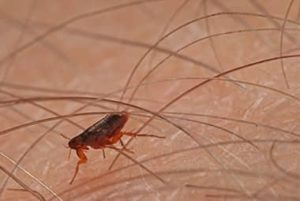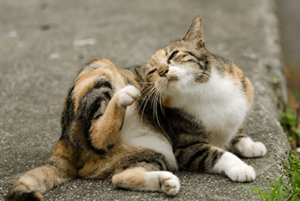In our last post, we discussed what you need to do to prep for a flea treatment before the technician arrives. Now let’s discuss what will be happening during the treatment.
First, let’s cover your job during this time. You remember how we said that you should reward yourself with a smoothie after all of your hard work? You should enjoy some downtime since you need to be out of the house for four hours. Well, on your way to your favorite smoothie joint, you should drop Whiskers off at the pet groomer. It is imperative that you have your pet treated for fleas before reintroducing him into your treated home. Unfortunately, popping on a flea collar won’t cover it. When pets are not properly treated for fleas, the flea treatment on the home is largely negated. Make sure that Whiskers is squeaky clean before bringing him back in the house.
You may remember from our previous post about flea biology that the fleas’ life cycle can make controlling them a challenge, particularly their pupae, which are highly-resistant to pest control products. In fact, they have some instincts that would be really cool if they weren’t so annoying. So, while Whiskers is reveling is his bath, our technician is at the house, executing a multi-tiered approach to flea control. Of course, specific treatment plans vary, depending on each customer’s circumstances, but our main plan is to treat carpeted areas and any necessary furniture with two types of products. The first product is designed to knock down the adult population quickly to interrupt the breeding cycle. The second is intended to keep the larvae and pupae from developing correctly. This means that they won’t be able to make successful transitions into adulthood, which again interrupts the breeding cycle. For this, we often use products called IGRs (Insect Growth Regulators). These are specifically designed to affect insect growth (often in the way they shed their skins), which means that they do not negatively affect humans, dogs, and cats. This is a great tool in a pest professional’s arsenal.
Now, you may be wondering why you need to be out of the house for four hours since that’s not typical during a regular pest control treatment. Of course, anyone can have an allergy to some ingredients, so it can be wise to keep everyone away since we often have to treat large areas at a time. However, we mostly recommend that four-hour time block because the products we use are slick. If you get them on your socks from the carpet and then walk to the hardwood, you could slip, and we don’t want that to happen. So don’t worry; we’re not bombing your house with pesticides.
Next time, we’ll discuss what you need to do after the flea treatment is complete and wind this series down. As always, you can contact us if you want more information!
The Three-Part Flea Treatment: Part 2 in Knoxville TN
Serving East Tennessee since 1971


